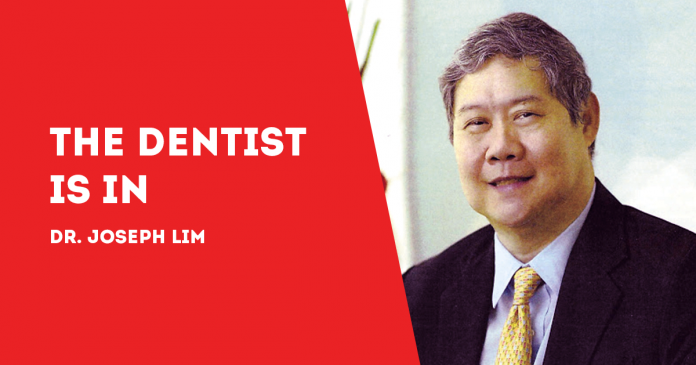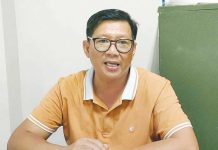
THE PHILIPPINE Dental Association (PDA) Science Committee has issued guidelines on protocols to protect patients, dentists and the dental staff.
Together with the PDA’s specialty affiliates, the Guidelines strongly recommend for dentists to be “extremely cautious and be very meticulous” in observing the protocols.
“It must be emphasized that there is no one solution to prevent infection of the dental health workers and cross-contamination in the dental setting,” the PDA Guidelines observe.
“The use of protective personal equipment MUST be layered with other measures including air engineering, universal infection control protocols, and meticulous disinfection with much consideration not to abuse the environment.”
It must be said here, as the Guidelines emphasizes, that with regards to dental treatment, most dentists have been practicing universal health care precaution for the prevention of droplet transmission.
“However, more air engineering controls should be put in place to eliminate aerosols brought by heavy breathing, talking, sneezing, coughing and most dental procedures,” the Guidelines state.
Clinicians should think of treatment alternatives in order to avoid misting out saliva and prevent transmission among dental health workers.
Even while the lockdown has been eased up in many areas, the expert opinion of the PDA feels it is still “highly advisable to limit treatment to urgent dental care” and that treatment is made when the safety of the entire dental team can be ensured.
The Guidelines was crafted by Dr. Stephen B. Almonte, PDA President, and Dr. Maria Liza C. Centeno, Chair, PDA Science Committee, with highly valuable inputs from the PDA Science Committee.
The Committee is composed of PDA Specialty Affiliates – Dr. Lavinia Marie H. Lucido; Dr. Fina Marilag G. Lopez; A/Prof. Mario E. Esquillo; Dr. Ricardo Boncan; Dr. Melchor Sarmiento; Dr. Susan Y. Mabunga; Dr. Noemi G. Reyes; Prof. Michelle S. Segarra; Dr. Mia Go; and Ms. Faye Ferrer.
Patient screening, the new normal
Patient screening is foremost prior to a face to face consultation with the dentist.
Thus begins the 52-page Interim Guidelines.
The Guidelines note that, even with all the precautions taken, ‘’it is inevitable’’ that the Corona Virus Disease 2019 or COVID-19 will spread.
However, due diligence in a health care setting can help prevent infection. And screening is one way of preparing the dental health worker.
The Guidelines define COVID screening as the process when patients who need to undergo aerosol generating procedures are required to present a negative test result of an RT-PCR test.
The swab test should have been conducted by a health facility approved by the Department of Health (DOH). The results should not be more than five days old (and the test used should have been approved by the DOH’s Research Institute of Tropical Medicine and the National Institutes of Health of the University of the Philippines Manila).
For patient appointments, the Guidelines recommend a two-phase triage. First, cases are screened over the phone to determine the urgency of care. With confirmed COVID-19 patients, the patient’s address and contact details are taken. Possible dental treatment options are explained. The infection control protocol in the clinic is also explained.
The second phase is conducted during the appointment. A questionnaire checklist for possible symptoms and contact exposure is made. A patient signs an informed consent on treatment options and waiver forms.
Precautions are made even prior to face to face consultations. The dentist or the dental staff makes an inventory of the Personal Protective Equipment or PPE on hand. Patient appointments are made only according to the availability of the PPE. NO PPE, NO TREATMENT
Except for emergencies, only prior appointments are accepted. Patients are scheduled apart to give enough time for disinfection of work areas. Reminders are placed for patients to wear masks, avoid touching the face, hand sanitize, exercise cough etiquette and maintain physical distancing.
The Guidelines also provide protocols for workflow process and clinic infrastructure.
Dentists should fix or modify clinic treatment and non-treatment layout to make sure that appropriate infection control can be efficiently carried out and clean areas are protected from contamination.
The clinic must provide the patient a screening area with hand disinfection facilities or 70 percent alcohol and if possible, a method of disinfecting shoes before entering the clinic.
Physical distancing of 2 meters apart is maintained in the waiting area.
Items like reading materials, toys and other objects that may be touched by others and difficult to disinfect should be removed from the waiting area.
The dental staff must be trained in patient screening, proper donning and doffing of PPE, preparing and disinfecting the clinic, sterilizing instruments and no-contact billing and receiving payment.
It is obvious from these extra-careful precautions that dentistry has drastically changed in the new normal.
As we started this series, we emphasized that patients should not be worried about being infected by COVID-19 when going to dental clinics. It is with the utmost care and diligence that dentists these days follow the PDA Guidelines in order to protect the life and health of the patient, the dentist and the dental staff.
***
Dr. Joseph D. Lim is the former Associate Dean of the UE College of Dentistry, former Dean of the College of Dentistry, National University, past president and honorary fellow of the Asian Oral Implant Academy, and honorary fellow of the Japan College of Oral Implantologists. Honorary Life Member of Thai Association of Dental Implantology. For questions on dental health, e-mail jdlim2008@gmail.com or text 0917-8591515./PN





